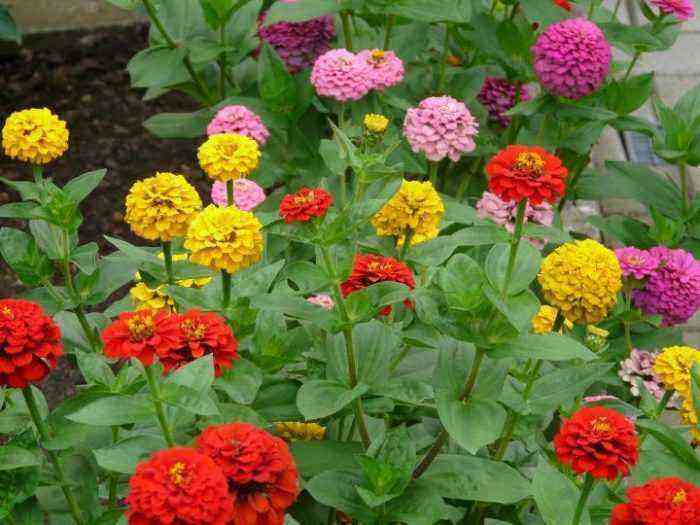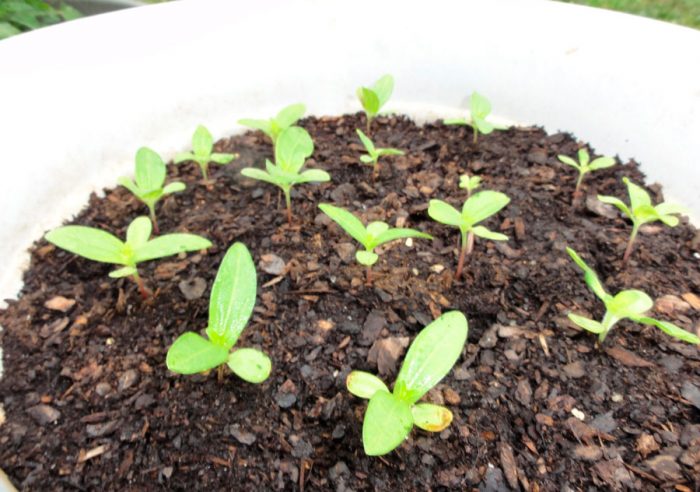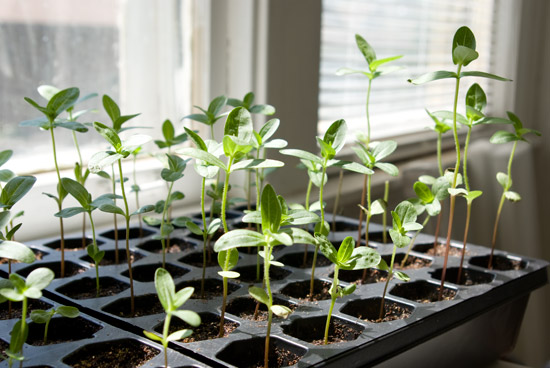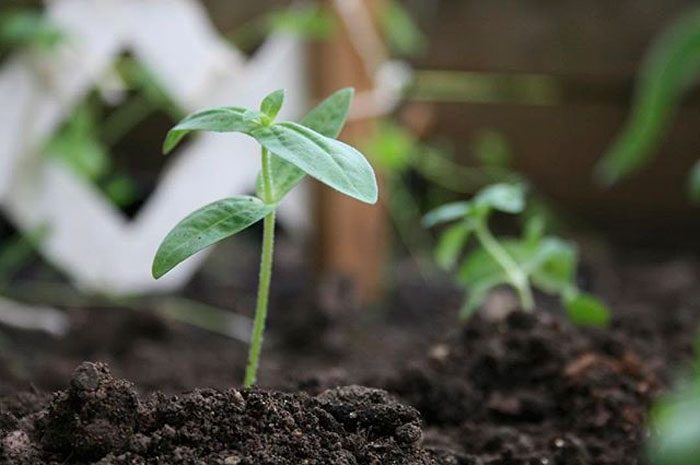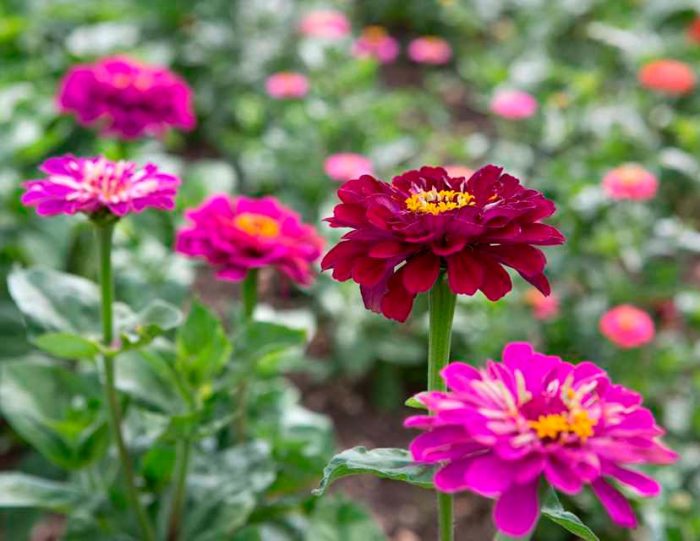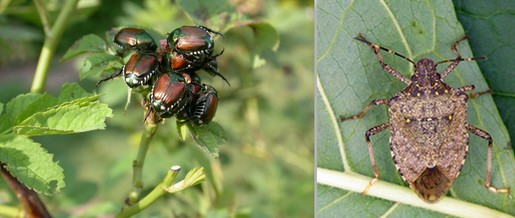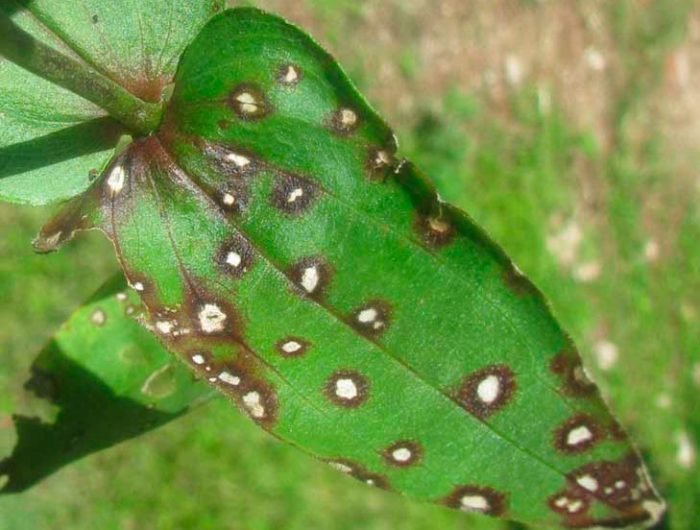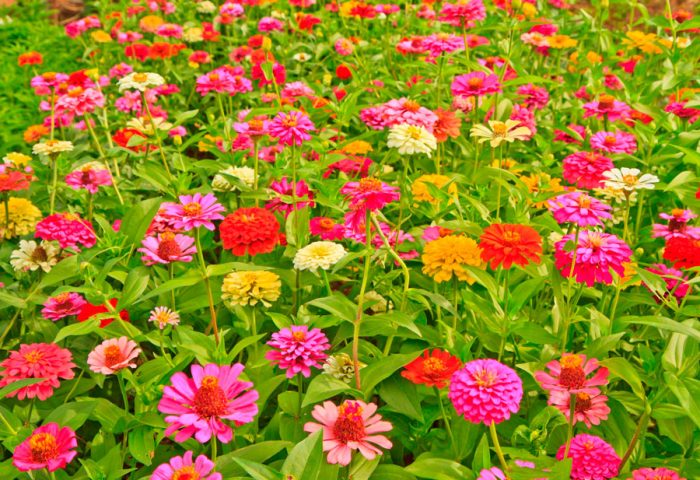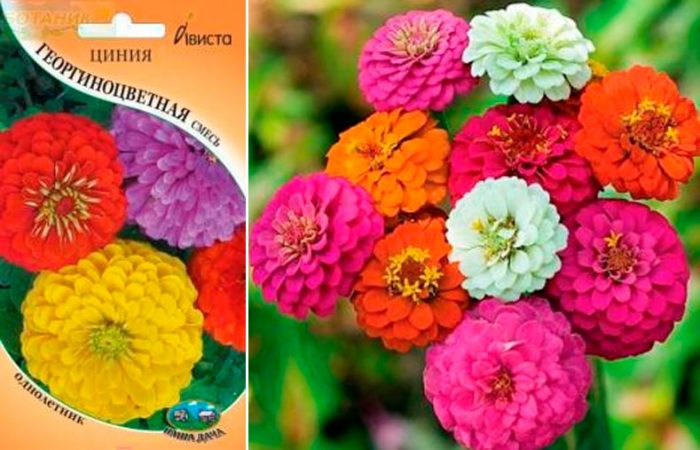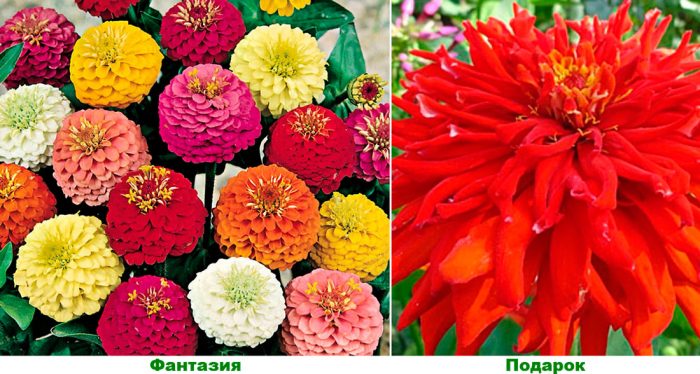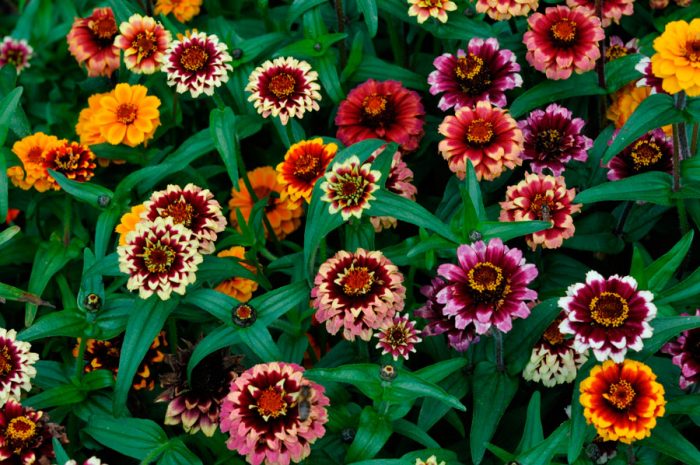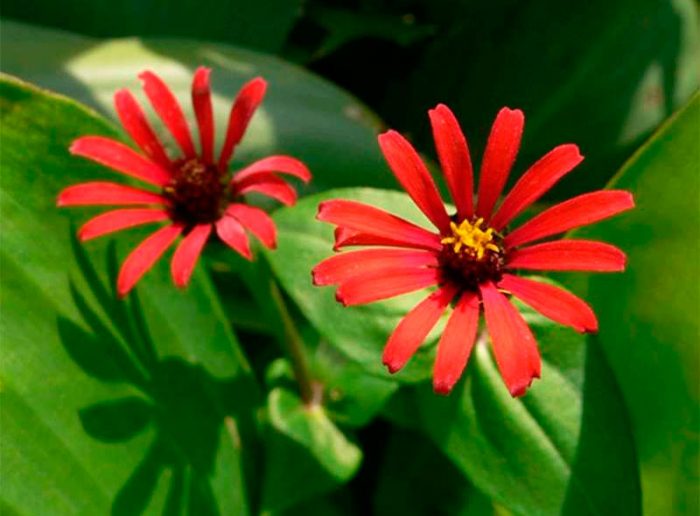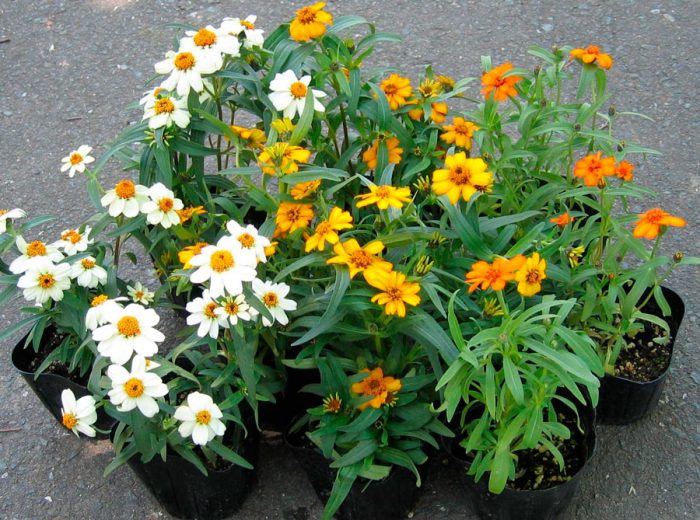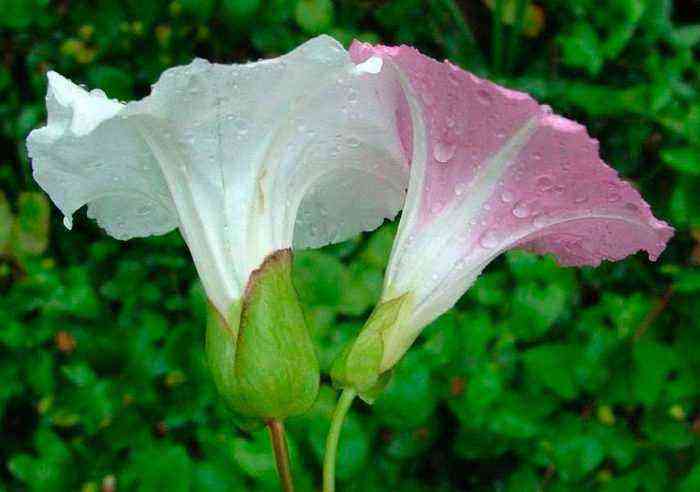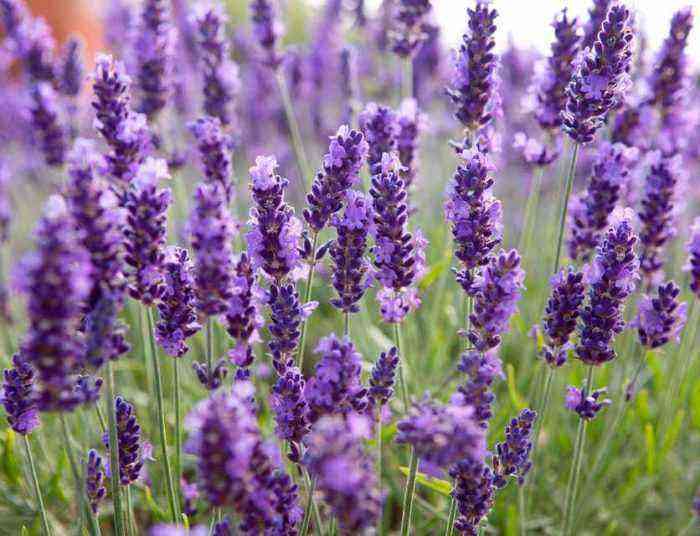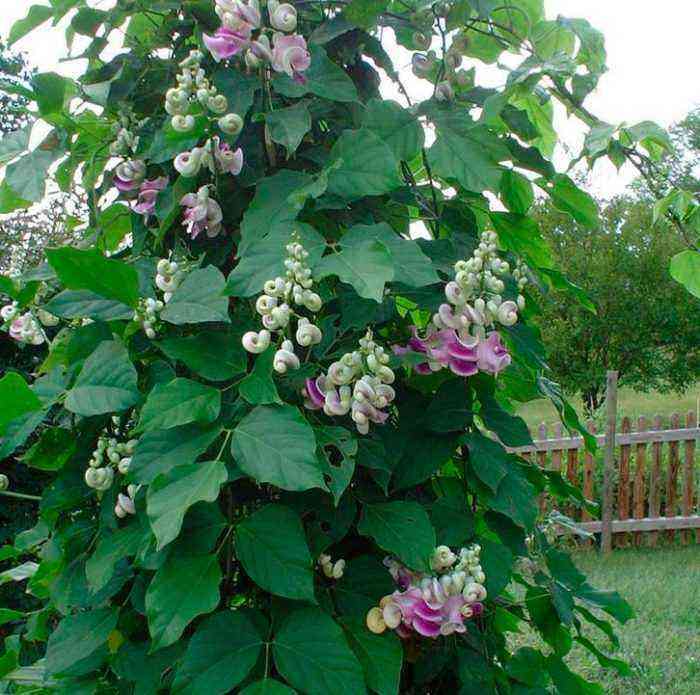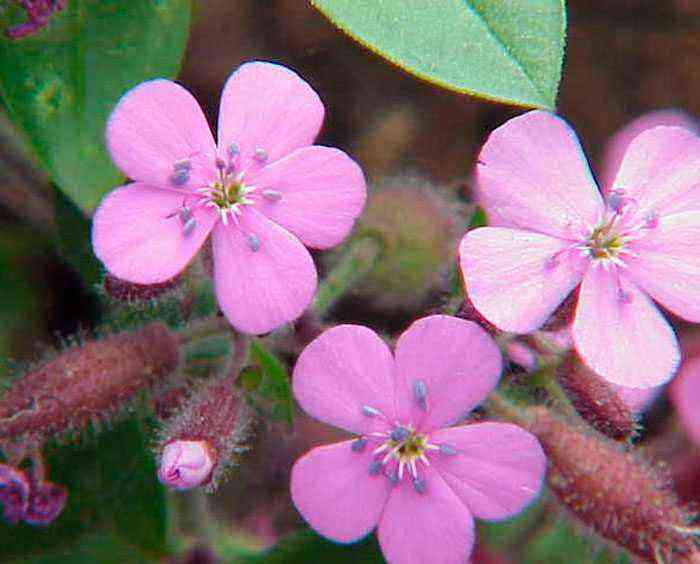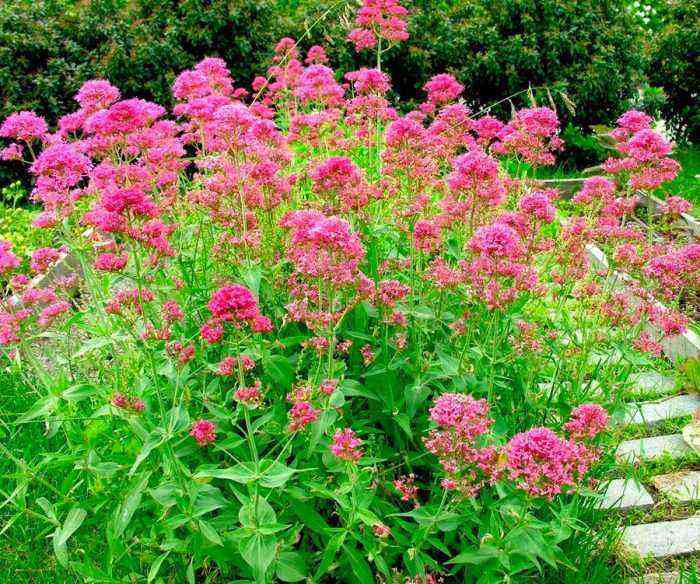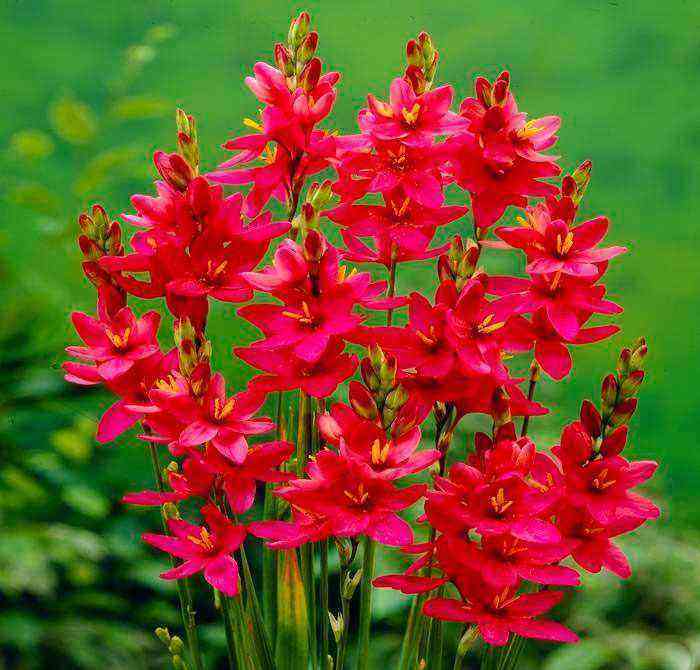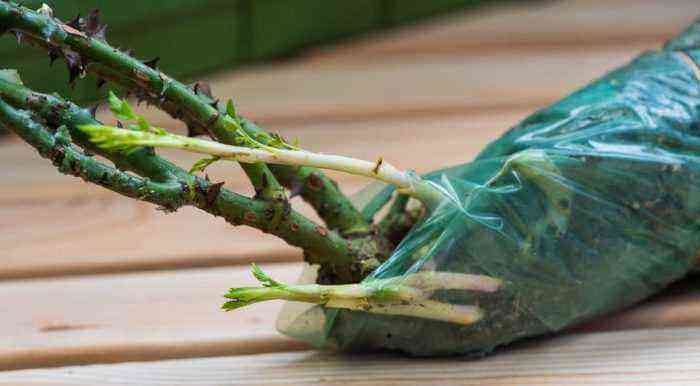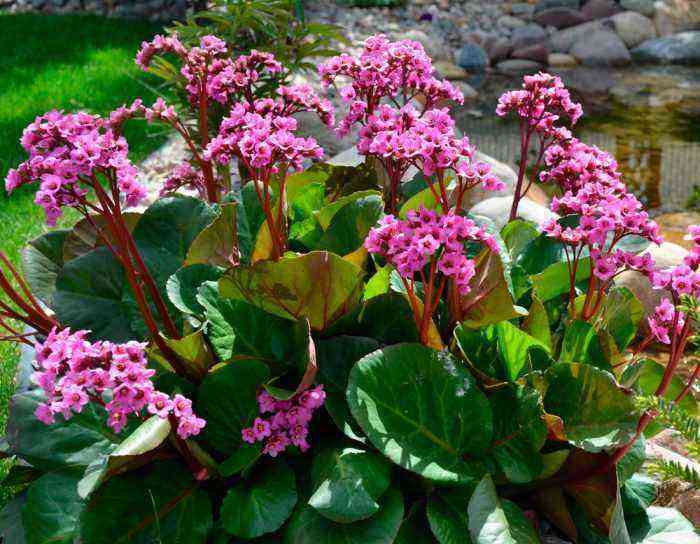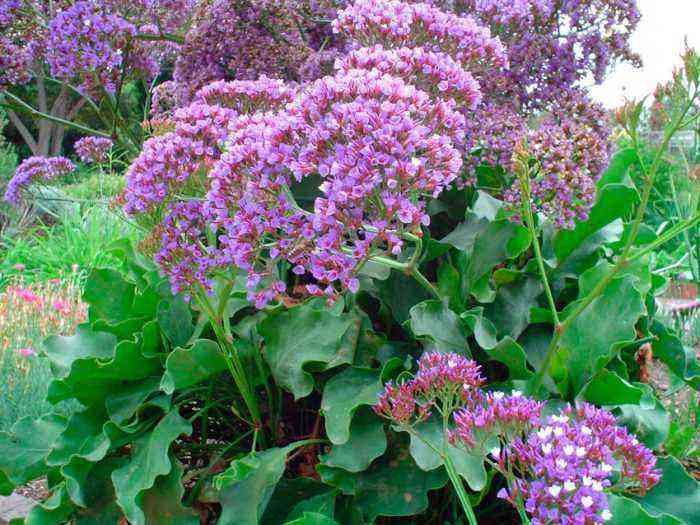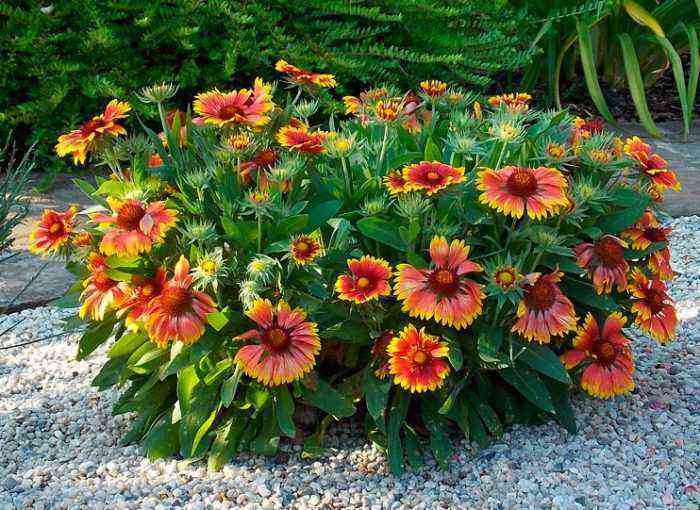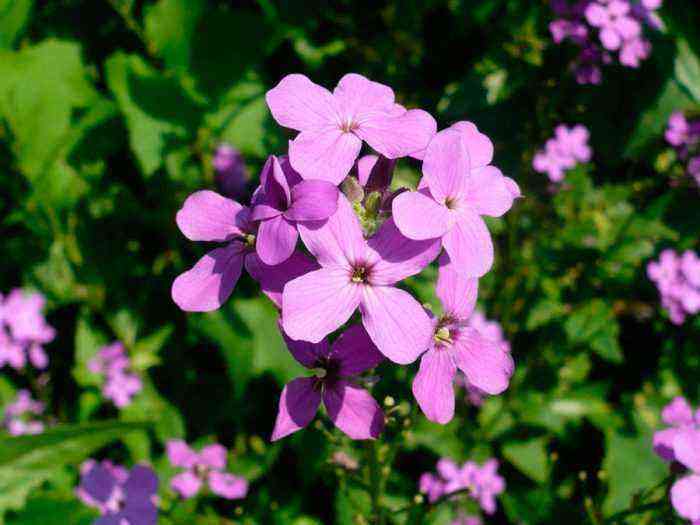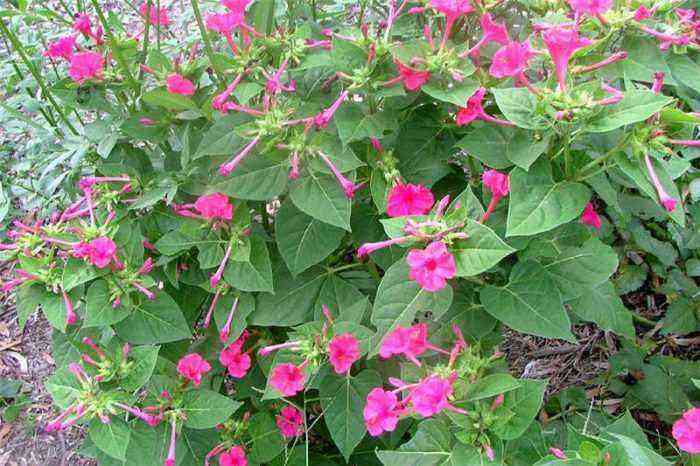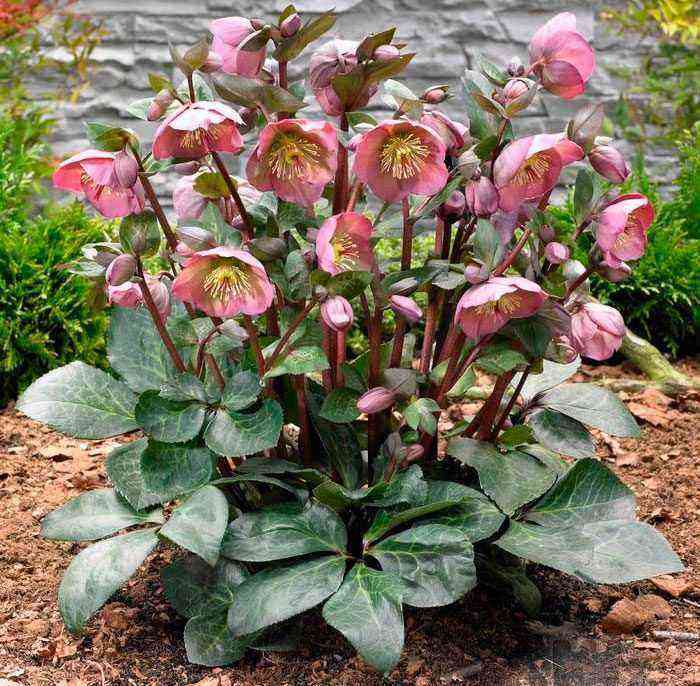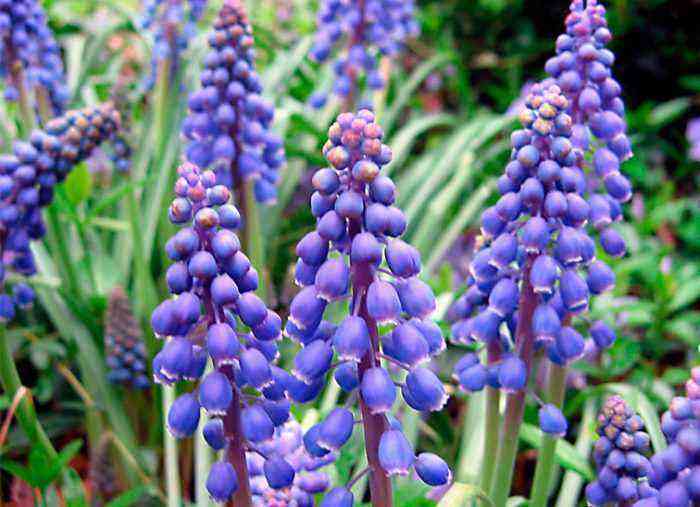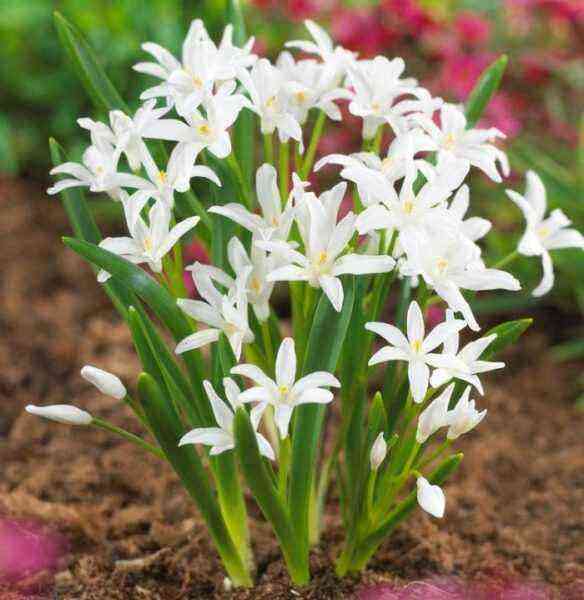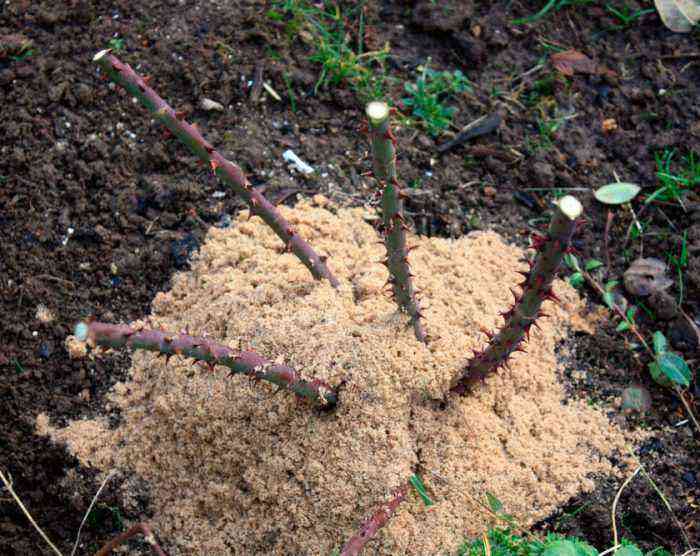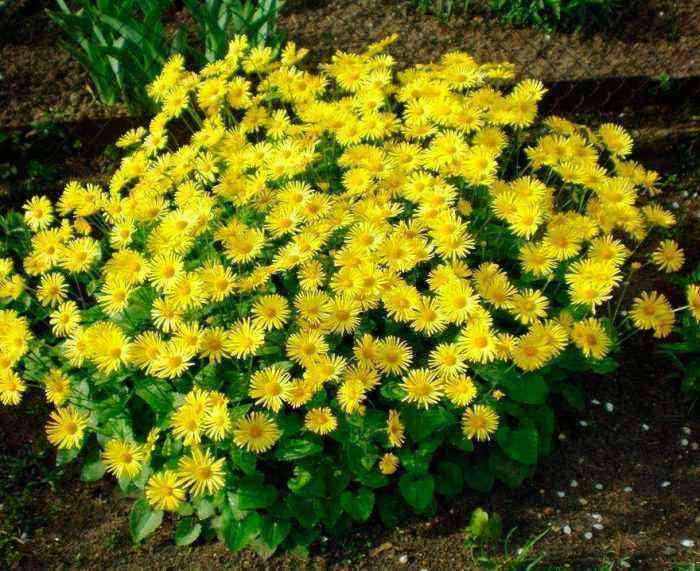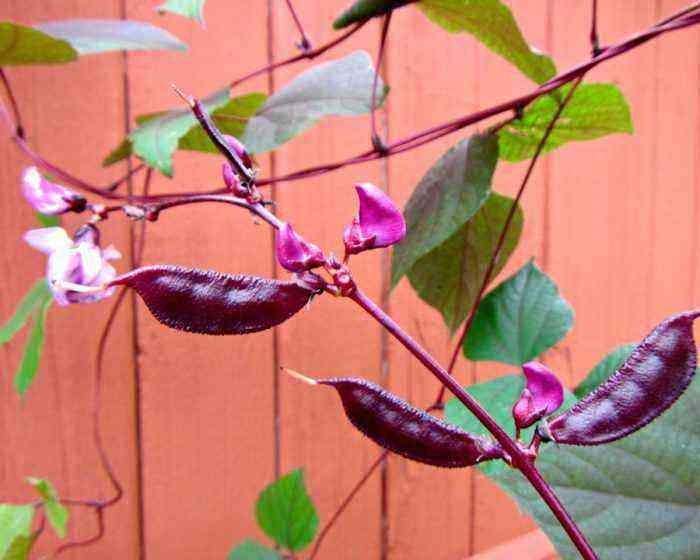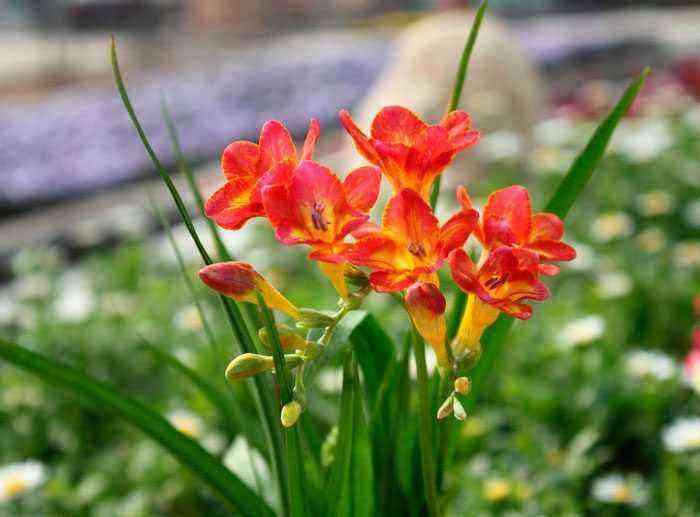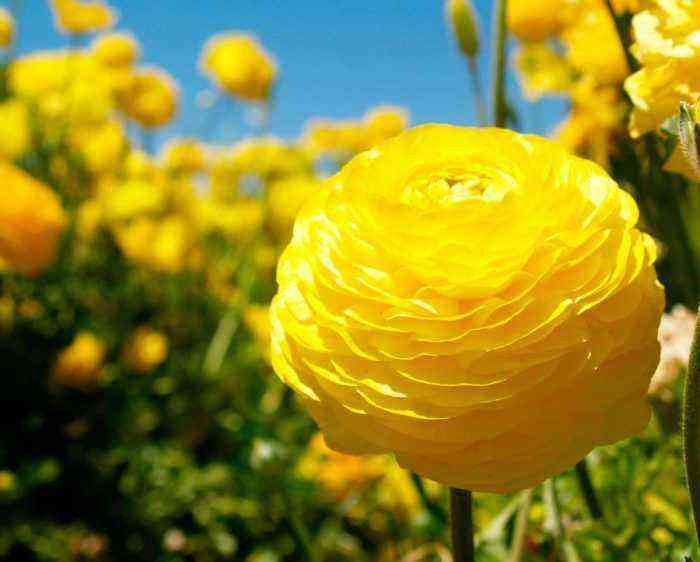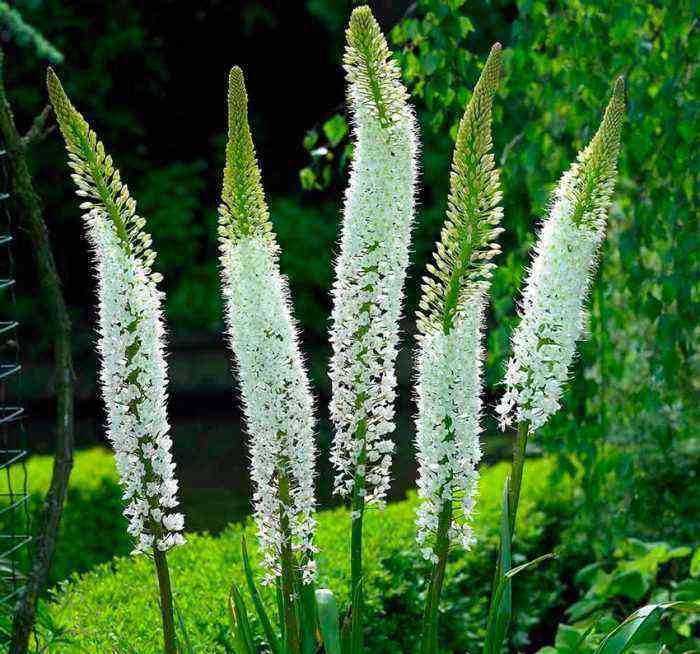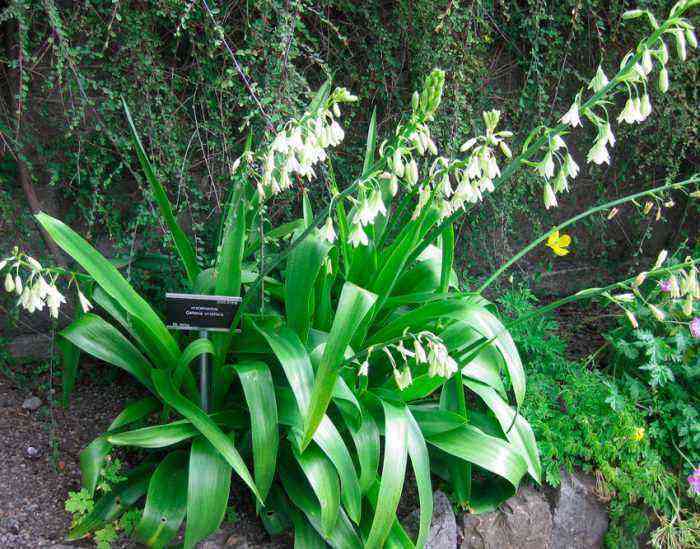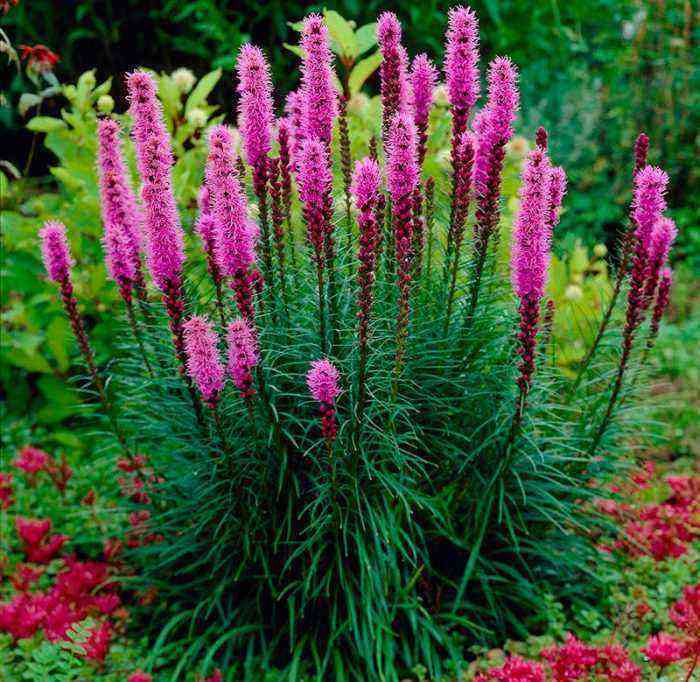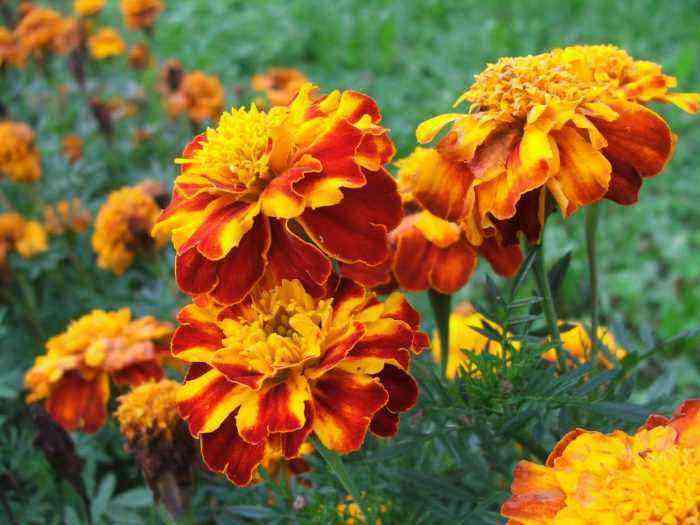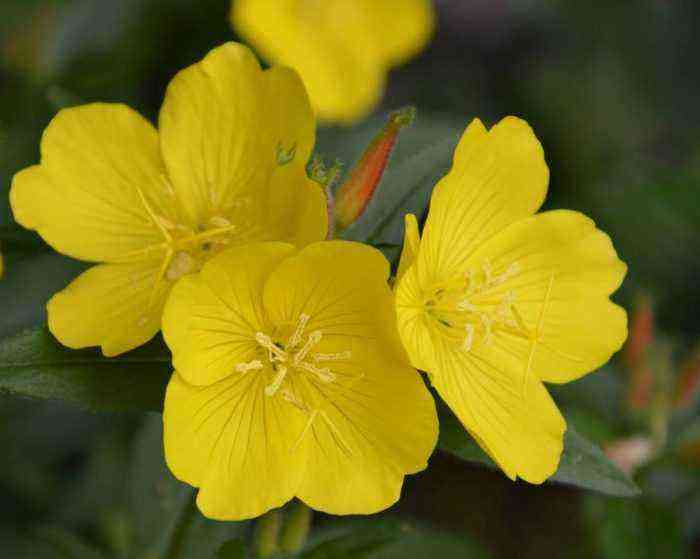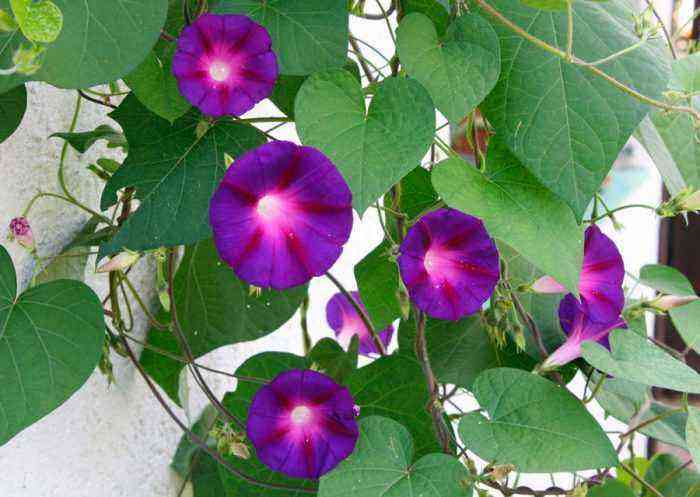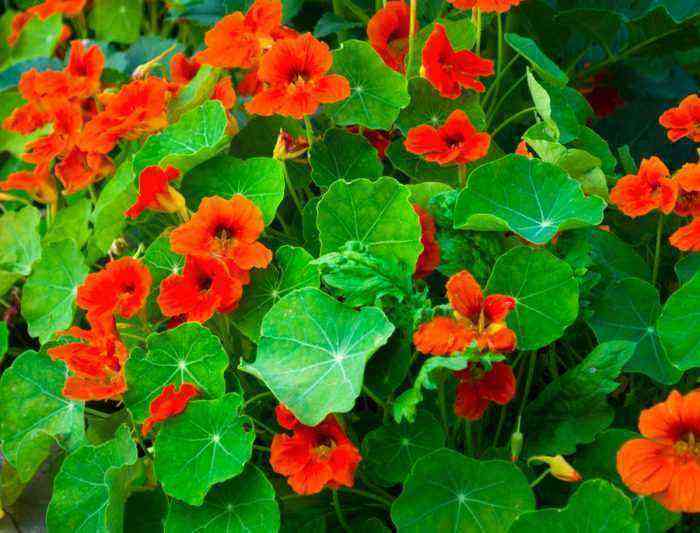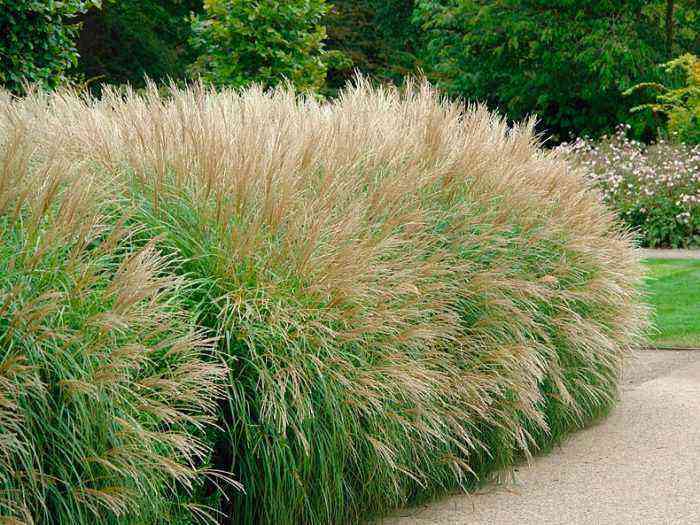The zinnia plant (Zinnia) is a member of the Astrov family. It is represented by perennial herbaceous plants and shrubs. The homeland of such a plant is Southern Mexico. This plant was named in honor of Johann Gottfried Zinn from Göttingen, a botanist, and also a pharmacologist, while he was director of the botanical garden, K. Linnaeus received herbarium material for research from him. The Aztecs began to grow zinnia from 1500 g, and on the territory of Europe this plant appeared only in the 18th century, while it almost immediately gained great popularity among gardeners, they decorated not only garden plots, but also aristocratic techniques. Already at the beginning of the twentieth century, zinnia could be found in almost every corner of the planet. Zinnia was even a symbol of the state of Indiana (USA) in 1931-1957. Today, there are about 20 different types of zinnia, as well as a large number of varieties and hybrids. This crop is so popular because it is very effective and undemanding to growing conditions.
Features of zinnia
The height of the zinnia bush directly depends on what type and variety it belongs to, and can vary from 0,2 to 1 meter. Sessile entire leaf plates have an ovoid shape, pointed towards the apex, they grow opposite or whorled, and on their surface there is pubescence, consisting of stiff hairs. Inflorescences are single apical baskets, which can reach 3–14 cm across, and are located on relatively long peduncles. The reed flowers in the baskets are placed tiled, while there can be one or several rows, they can be painted in different colors, for example, purple, yellow, white, orange or red. They cannot be painted only in various shades of blue. Small tubular central flowers in inflorescences are brown-red or yellow in color. The fruit is an achene with a tuft.
Flowering begins in the second half of June, and it ends with the first frosts. Zinnia is resistant to both drought and heat. It is grown as a spectacular garden plant, which is distinguished by its unpretentiousness, it also stands excellently in the cut. Zinnia perennial is grown only in those regions where winters are quite mild and warm. In middle latitudes, this crop is grown only as an annual, because this plant dies even due to a slight and not very long frost. Gardeners call him a major. Rustic landscapes are increasingly popular in Europe, with annuals such as marigolds, marigolds, zinnias and chamomile being the main colors. It is also grown in flower beds with other more noble flowers. Also, zinnia is grown among vegetables in the garden, since it has the ability to stretch upward, while practically no shadow is created.
Growing zinnia from seeds
Sowing
Both perennial and annual zinnia can be propagated by seed (generative) method. Sowing seeds can be done directly in open soil, but only in those regions where the climate is mild, and there should be no frosts in May. In colder regions, zinnia is grown only through seedlings, because if the air temperature drops to at least minus 1 degree, then the seedlings will freeze. Gardeners with considerable experience are confident that the grown and hardened zinnia seedlings, after transplanting into open soil, will take root very well and start growing quickly.
Before starting sowing, the seeds should be prepared. To do this, they are wrapped in gauze or a rag that is well moistened with Epin’s solution. This will help separate viable seeds from non-viable seeds. If the seeds are freshly harvested, they will hatch very quickly (after about two days). At the same time, old seeds will need about 7 days for this. In the last days of March or the first days of April, those seeds that turned out to be viable must be sown in peat pots filled with moistened soil mixture, 2 or 3 pieces each, while they need to be buried into the substrate by only 10 mm. It should be remembered that this plant reacts extremely negatively to picking, which is why it is recommended to use individual pots for sowing seeds. After the seeds are sown, the surface of the substrate must be moistened. Then the containers are transferred to a well-lit and warm (from 22 to 24 degrees) place. If the seeds are sown in compliance with all the recommendations, then the first seedlings should appear after a few days.
Care of seedlings
Zinnia seedlings are distinguished by the fact that they grow adventitious roots in a short time. In this regard, if the plants are stretched out, you will just need to add a small amount of soil mixture to the pots. You also need to remember that the seedlings simply need a bright diffused light, but if they are removed in partial shade, then they will be very elongated, and their color will fade.
If the seedlings are thin, then this will avoid the pick, which the zinnia tolerates quite painfully. Before you start transplanting seedlings into open soil, they must be hardened. To do this, they are transferred to the street every day in the daytime, each time gradually increasing the duration of the procedure.
Planting zinnia in open ground
What time to plant
Experienced gardeners advise planting zinnia seedlings in open soil in the second half of May, but it should be borne in mind that return spring frosts should be left behind, since this culture is quite thermophilic. For landing, you should choose a well-lit area, which must have reliable protection from the wind. The soil should be fertile, well-drained and neutral. Before planting seedlings, the site must be prepared and, if possible, this must be done in the autumn. To do this, they dig it to a depth of 0,45 m, removing all weeds, while compost, deciduous humus or rotted manure must be added to the soil (per 1 square meter of the plot from 8 to 10 kilograms).
Features of landing
When planting between the bushes, a distance of 0,3–0,35 meters must be observed. A flower is planted together with a peat pot or by transshipment. The planted plants will bloom in the first days of July.
Zinnia care in the garden
Taking care of your garden cinnamon is easy enough. Plantings need only be weeded in a timely manner, loosened the soil surface on the site, and also water abundantly, and this must be done at the root, since liquid should be excluded from the flowers. After the bushes bloom, they should be regularly examined in order to timely remove the flowers that have begun to fade. Zinnia’s shoots are very strong, so there is no need to install a support or to tie them up.
Additional fertilizing
After the seedlings appear and until the very planting in open soil, you need to make 3 fertilizing with mineral fertilizers with a low nitrogen content. The bushes planted in the garden are fed with liquid manure or mineral fertilizers at least 2 times during the summer months. So, the first time the bushes need to be fed 4 weeks after they are planted in open soil, and the second procedure is carried out during the formation of buds.
How to pinch zinnia
Many gardeners do not know for sure whether zinnia needs to be pinched, and if so, when should this procedure be carried out? A pinch of zinnia is done so that the bush is more lush and beautiful. You can pinch it at the stage of growing seedlings or after the bushes have taken root after they are planted in open ground. To do this, pinch the plant over 3 or 4 leaf plates. If this procedure is not carried out, then you will grow spectacular flowers on long peduncles, which are very good at cutting.
Zinnia pests
Most often, this plant is harmed by May beetles, slugs, aphids and snails. To get rid of gastropods, it is recommended to use traps, so bowls placed in several places on the site that need to be filled with beer are perfect for this, as well as pieces of roofing material and slate scattered between the bushes, since it is under them that such pests most often hide. They are collected exclusively by hand. The annoying May beetles must also be picked by hand and placed in a bucket filled with soapy water.
If aphids have settled on a bush, then to destroy it, it is necessary to use a solution of tar soap (for 1 bucket of water 100 grams), which is used to process them. If there are a lot of pests, then Actellik or Fufanon solution can be used to destroy them, in the manufacture of which you must follow the instructions.
Diseases of zinnia
Zinnia is most susceptible to diseases such as fusarium, gray rot, bacterial spotting. However, she is especially sick with powdery mildew.
Examine the bush. If you find at least one leaf plate on the surface of which there are brown-gray round specks, then this means that the plant is affected by bacterial spot. This disease is incurable. If the infection is not severe, then you can try to simply tear off all the affected leaf plates. If the disease is already running, then the bush must be dug up and burned as soon as possible.
For the treatment of powdery mildew (a whitish loose bloom forms on the surface of the bush), and also fusarium and gray rot, fungicidal preparations are used, for example: Fundazod or Topsin-M. Bushes affected by powdery mildew are recommended to be sprayed with Skor, Topaz or Topsin.
As a rule, zinnia gets sick due to the fact that the rules for caring for it have been violated. For example, the development of the disease can occur due to too abundant watering or overly dense planting. In this regard, when a disease appears, you must first understand what could have provoked its development. Then you need to try to eliminate all the existing violations in the care of such flowers, and then proceed to direct treatment. This will help prevent similar problems in the future.
Zinnia after flowering
Seed collection
Ripening of zinnia seeds, as a rule, is observed 8 weeks after the opening of the inflorescence. In this regard, experienced gardeners recommend to outline several inflorescences for collecting seeds from those that opened first. The most high-quality seeds ripen on inflorescences located on first-order stems, in this regard, absolutely all side shoots must be cut off from the bushes you have noted. After the ripe flowers become brown, they are cut and dried. Then the seeds are extracted from them. When they are cleared of the dry remains of the inflorescence, they must be removed to a dry place for storage, while there must be a constant temperature. The seeds remain viable for three or four years.
Wintering zinnia perennial
It was already mentioned above that in middle latitudes, zinnia is grown only as an annual. However, if the bush is grown in a pot or container, then it must be moved indoors in the autumn, and then the plant is looked after in the same way as indoor flowers. In this case, the zinnia will be grown as a perennial.
Types and varieties of zinnia with photos and names
In nature, there are more than 20 different types of zinnia, while only 4 of them are cultivated by gardeners, namely: narrow-leaved zinnia (zinnia Hage), graceful, fine-flowered and linearis. Breeders are especially careful with such varieties as graceful and narrow-leaved zinnia. Thanks to their painstaking work, a large number of excellent varieties and hybrids of zinnia were born, which today are grown with pleasure by gardeners of different countries.
Zinnia elegans
This herbaceous annual plant can grow to a height of 100 centimeters or more. Simple inflorescences can be colored orange, white or pink. Straight, as a rule, not branched shoots are rounded in cross-section, on their surface there is a pubescence, consisting of hard hairs. Apical inflorescences-baskets are formed on the upper parts of all stems. Entirely sessile leaf plates have an ovoid shape and a pointed apex. In length they reach from 50 to 70 millimeters, and in width – from 30 to 45 millimeters. There is also pubescence on the surface of the leaves. Inflorescences reach 5-16 centimeters across, they can be semi-double, simple and double. They include reed flowers, reaching 40 mm in length and 15 mm in width, they can have a variety of colors, but not blue. The composition also includes tubular median flowers, painted in brown-red or yellow. Flowering begins in June, and it ends with the first frosts. In the wild, this species is most common in southern Mexico. It has been cultivated since 1796. There are a large number of hybrids and varieties of this type of zinnia, which are classified according to several characteristics: the shape of the inflorescences and their structure, the timing of flowering and the height of the shoots. Zinnias are divided into early, middle and late according to flowering periods. According to the structure of the inflorescences, all varieties are divided into double, simple and semi-double. According to the height of the shoots, this culture is divided into:
- zinnia high – the height of the shoots is from 0,6 to 0,9 meters, it is cultivated exclusively for cutting, because this plant looks very cumbersome in a flower bed;
- medium zinnia – the height of the stems is from 0,35 to 0,5 meters, grown in a flower bed, and also used for cutting;
- zinnia undersized, or dwarf – the stems reach 0,15-0,3 meters in height, as a rule, these plants are well-branching bushes, for the cultivation of which both a container or a pot and a flower bed in the garden are suitable.
According to the shape of the inflorescences, all varieties and hybrids are divided into 7 categories. The most popular categories in mid-latitudes are:
Zinnia dahlia
Powerful compact or spreading bushes in height can reach 0,6–0,9 m. Their shoots are of the first order. Large leaf plates are about 12 centimeters long. Terry hemispherical inflorescences reach about 14 centimeters in diameter. Varieties:
- Violet – a double variety, reaching a height of 0,6–0,75 m, dense inflorescences can be painted in a variety of shades of purple;
- Orange Koenig – the height of the bush is 0,6–0,7 m, double inflorescences reach 14 centimeters in diameter, and they are colored orange-red;
- polar bear – the height of a compact bush is about 0,65 m, inflorescences are densely double, they are painted white with a greenish tint.
Zinnia midget, or pomponnaya
The height of this branchy compact bush is no more than 0,55 m, it has many shoots of the second, third and fourth order. The leaf plates are small. The inflorescences are relatively small, so, in diameter, they reach only 50 mm, and they are similar in shape to a pompom on a cap. Varieties:
- Little Red Riding Hood – the height of the bush is about 0,55 m, densely double rich red inflorescences have a rounded or truncated-conical shape;
- Tom Tumb – the height of a compact bush is about 0,45 m, double dense inflorescences have a red color, and their shape is a slightly flattened ball;
- Tambelina – the height of the stems of the plants of this mixture is about 0,45 m, the inflorescences can be painted in different colors, and in diameter they reach 40–60 mm.
Ziniya fantasy
The height of compact bushes is almost spherical in shape, about 0,5–0,65 m. The leaf plates are large. Curly loose inflorescences consist of narrow reed flowers rolled into tubes and bent in various directions, some of them are bifurcated at the tips. Varieties:
- Fantasy – the height of the bush is about 0,6 m, loose double inflorescences reach 10 centimeters in diameter, they can have different colors, for example: red, purple, pink, salmon, purple, deep yellow, orange-red, white, etc.
- Gift – color of inflorescences is deep red.
In other countries, the following are very popular:
- Californian giant zinnia… The height of the shoots is about 100 centimeters and even more. Terry inflorescences reach 16 centimeters in diameter, ligulate flowers are placed tiled. Blooms late enough.
- Zinnia giant cactus… The height of the bush is 0,75-0,9 m. In diameter, the double inflorescences reach 11 centimeters. The reed flowers are rolled into tubes, sometimes wavy with raised tips.
- Zinnia super cactus… The height of the bush is about 0,6 m. The inflorescences are the same as those of cactus zinnia.
- Zinnia scabiosa (anemone). The inflorescences reach 80 mm in diameter. Reed flowers are placed in 1 row around the middle, which consists of tubular flowers overgrown with corollas, which is why the middle looks like a hemisphere. The middle is colored to match the reed flowers.
Zinnia haageana, or narrow-leaved zinnia (Zinnia angustifolia)
The homeland of this species is Mexico. This erect plant is an annual that forms branched bushes. Seated pointed leaf plates have an elongated or lanceolate shape. Small rich orange inflorescences can be double or simple. Varieties:
- Glorienshine… The height of the highly branched bush is about 0,25 m. The inflorescences are double, the ligulate flowers at the base have a dark orange color, and at the tips they are brown-red.
- Persian Carpet Mixed Series… Bicolor semi-double inflorescences are red with white, yellow, lemon or orange. Quite massive bushes look like an oriental carpet.
- English varieties of Classic and Starbright… The height of the bush is about 0,3 m. The creeping, strongly branching stem is relatively thin and weak. Inflorescences are colored yellow, white or orange. This variety is grown, as a rule, as ground cover plants.
- Somʙrero… The variety is used to decorate flower beds. Brownish-red inflorescences have orange edging.
Zinnia tenuiflora
This type is most often used to form landscape flower beds. The height of the bush is about 0,6 m, thin geniculate shoots are painted in a pale red color. In diameter, small inflorescences reach 30 mm. Purple curved narrow ligulate flowers have twisted tips. Varieties: Red Spider.
Zinnia linearis
This type can be easily confused with narrow-leaved zinnia, because its leaf plates are thin and sharp, like the tips of nail scissors. This species is the smallest of those cultivated by gardeners. The spherical bushes reach a height of about 0,35 m.The inflorescences are also small. The yellow reed flowers have an orange edge. Such a flower is most often grown in balcony containers, in small flower beds, in pots and on alpine slides. Varieties:
- Golden ai… Reed flowers are white. The middle is also white and consists of tubular flowers. The inflorescences are similar to chamomile.
- Caramel… The middle is black, and the reed flowers are caramel yellow.
- Yellow star… The inflorescences are colored yellow.
When crossing the Zinnia graceful and the Zinnia Haage, many hybrids were obtained. The most popular series is Profusion: the height of small bushes is about 0,35 m, they contain a large number of small daisies, painted in a variety of colors. The Magellan series is becoming more and more popular: the height of the bushes is about 0,35 m, the dahlia-like densely double inflorescences reach 10 centimeters in diameter, they can be painted in cream, pink, cherry, yellow, coral, orange, red and salmon color. Not so long ago, gardeners began to grow the Swizzle series, at the moment it includes only 2 varieties:
- Cherry Ivory – inflorescences have a cherry color, the tips of the reed flowers are cream;
- Scarlett Yellow – inflorescences are red with rich yellow tips.
